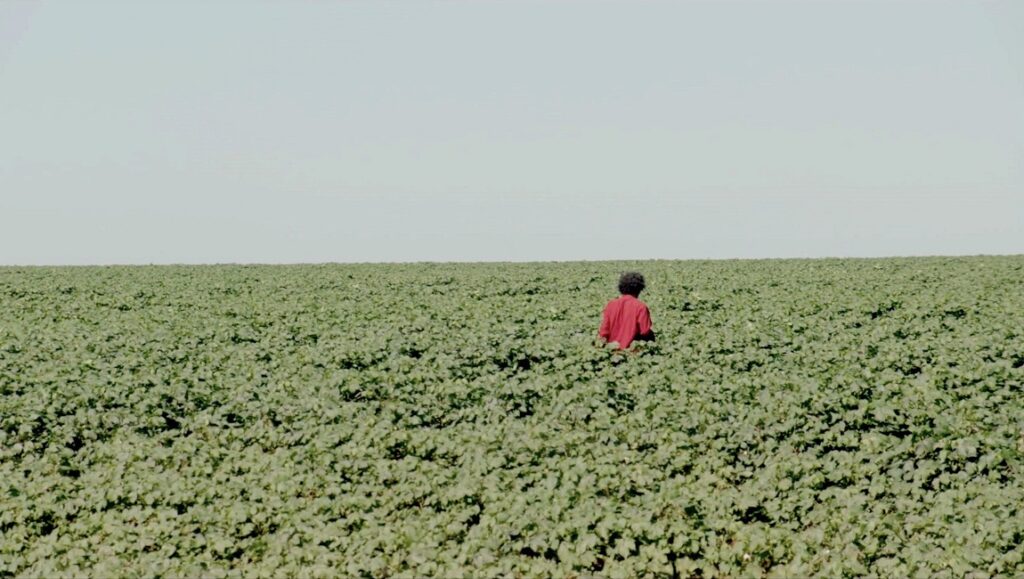Parting with the geographical scope and pedagogic address of her past output, Paula Gaitán’s short film/video-installation Se hace camino al andar (literal translation: The Path Is Made By Walking) inks its fabulist designs upon a comparatively bare canvas. Its opening shot is of a dirt path whose radix winds beyond our immediate sightline, flanked by a cornfield to the right. Adjacent to it, and on our extreme left, is an access road facilitating motor transport. What’s obviously noteworthy is Gaitán’s circumscription of the viewer’s perspective and interpretive agency, alongside the disconnect between a longstanding tradition of subsistence agriculture and industrial convenience. Then, we observe a solitary figure leisurely strolling towards the camera, before disappearing into the fields; only to emerge after a moment’s pause, his route back now obstructed by a tractor — modernity’s encroachment on culled land. He dips beneath it, and continues forging off into the distance, the shot finally cutting… only to resurface in the opening refrain.
Gaitán’s formal stratagem, of continuously redirecting our attention to a central node, utilizing her anchor to the mortal world as something of an all-purpose vector, inserted into the text as a spatial coordinate around which the locale structures itself, is thusly revealed within the first eight-ish minutes of the film. From then on, even as her cartograph expands, Gaitán’s structural inversions play out their functions as little more than reaches at further disorientation and unresolved ambition, unaided by a late, scantly-justified descent into direct metaphor wherein the above-mentioned disparity between Man and Nature sees partial reconciliation. Credit where it’s due, though, these targets end up achieving a not-unintriguing compatibility with her associative specificities, clarified all the better for a noticeable abstention from aesthetic experimentation otherwise. Intrusions of birdsong, rustling crops, indistinct chattering, passing vehicles, and, at two intervals, blaring folk music, all materialize at random, uncoupled from the events on-screen and at logical distance from their sources. In this, at least, one can intuit a vaguely hauntological knowledge of the invisible labor, native life and wonders once attached to this place and its unrecoverable roots. Ending with a dedication to the Kuikuro of Western Brazil, a people overwhelmingly disenfranchised by the Bolsonaro administration’s denial of pandemic relief to affected indigenous regions just last year, it’s clear to see Gaitán’s dedication to a new, more sensitively modeled ethnography, one missing vital components here and there, but a no less commendable step.
Published as part of Berlin Film Festival 2021 — Dispatch 7.


Comments are closed.